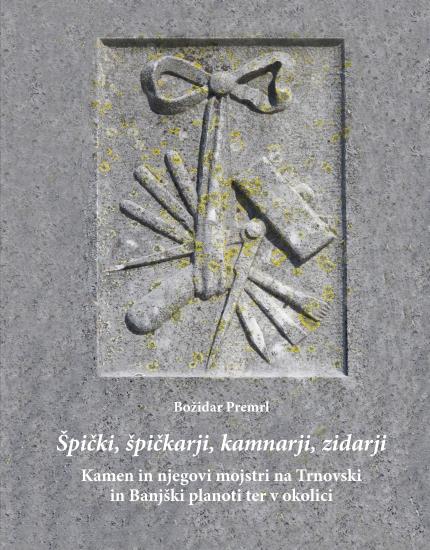
Author:
Božidar Premrl
Year:
2024
The book takes an ethnographic look at stone, stonemasonry and stonemasons on the plateau of Trnovo and Banjščice and in the surrounding area. After an overview of the geographical features of the area, he presents the characteristic stones of the area, paying special attention to flat and winged stones, which are particularly suitable for the roofing of listed stone buildings. He places the rural architecture in this geographical and geological context and analyses the stonemasonry work on the rural buildings. In particular, dated examples are presented in detail so that the development of the buildings from the 16th to the first half of the 20th century can be traced.
The presentation of the most interesting examples of stone cultural heritage is followed by biographies of stonemasons, quarrymen, bricklayers and other master stonemasons. The most important village was Grgar with the largest number of stonemasons and stone carvers, followed by Sedovec in Ravnica, with Voglarji and Trnovo on the edge of the Trnovo plateau and Levpa with Seniški Breg on the western edge of the Banjščice plateau. A special place is occupied by Kanalski Lom with the self-taught artist Andrej Murovec, who left behind a work of magnificent sculptural gravestones. Finally, the foreign stonemasons and bricklayers who built the railroad line in the Soča Valley in 1903-1906 are also presented.
-
Author
-
Publishing House:
Založba ZRC
-
Publisher
-
ISBN
978-961-05-0905-9
-
Year
2024
Language(s)
-
Specifications
hardback 24,5 × 18 cm 260 pages illustrated
-
E-publications
13. 12. 2024
-
Permalink